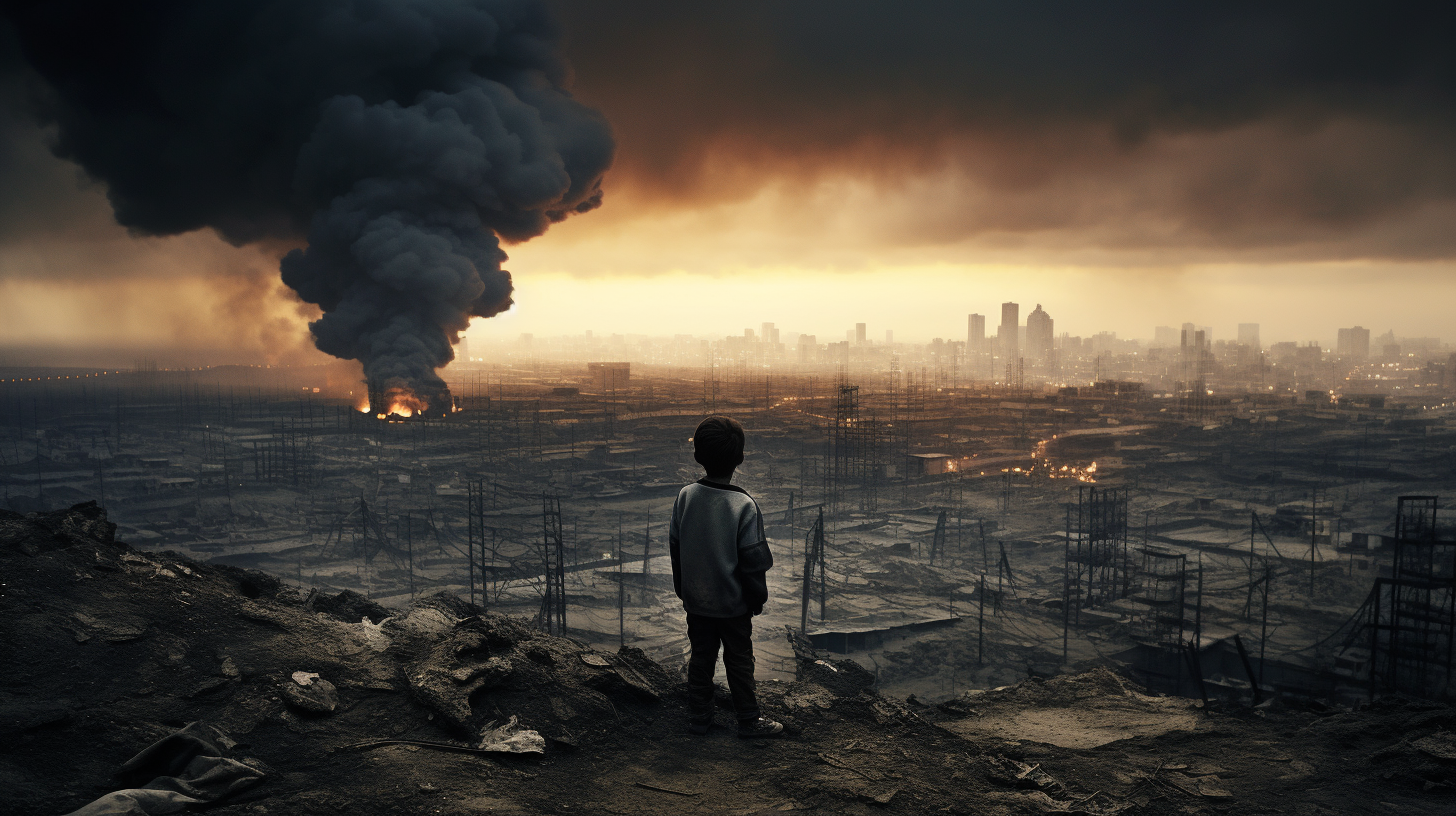Imagine a sharp intake of breath, each gasp a stinging reminder of the air’s potency, the sky no longer a benign canvas but a roiling tapestry of toxic mists. We wake each day to don masks that cling to tired faces, the perpetual guardians against an atmosphere intent on reminding us of Earth’s deepening scars. In this world, the question is no longer about stopping the onslaught, it’s how to survive the toxic sky we have woven.
Once the domain of doomsayers and dystopian fictions, the reality of our acrid air is not the result of overnight calamity but the slow, insidious creep of neglect. The factories that mushroomed the world over pumped particulates with unrelenting hunger, their plumes a grotesque offering to the gods of progress. Our forests, those ancient sentinels, could only absorb so much before they too recoiled, blackened and barren.
Now, we live our days beneath a sun dimmed by the haze, the earth beneath our feet cracked and thirsty. Seasons no longer shift in predictable patterns; instead, we brace for the next wave of extreme temperatures, or the ominously named “Black Rains”—waters so acidic they burn on contact. Survival has become an art: technology once celebrated for its ability to connect now serves as a lifeline, filtering the air we must still breathe, predicting the next surge of invisible death.
The realms of safety are shrinking, with zoned sanctuaries boasting air purifiers the size of buildings and flora engineered to do what the now-mythical forests of old could. Those outside the zones whisper of an Earth beyond repair, scuttling through the shadows of derelict buildings in search of clean air caches or the mythical “last tree standing”.
But human ingenuity thrives — even in adversity. There exists an undercurrent of rebellion, those whose lungs still yearn for unpolluted air. They retrofit abandoned infrastructures, create underground havens of verdure amid concretized deserts, trade in secrets of survival. Sustenance is rethought, with vertical farms and lab-grown foods trying to rewrite the narrative of scarcity, enshrined below the smog.
Yet, in this world, knowledge is currency — and knowledge can terrify. There are whispers of a day when the air is so corrosive, even these measures will fail. ‘Hope,’ a concept sold in the past, is now a contraband word. Some turn to stories — remembered or invented — of a time when the sky was a vault of endless blue, air a gift freely given. They are the new myth-makers, constructors of fables that are met with longing, despair, or scorn, depending on who listens.
We exist in a balancing act fraught with the irony of adaptation. Our daily stratagems against the deathly shroud a dance macabre with time itself. To survive, one needs wit, wealth, or the will to outrun the ever-accelerating collapse. We fasten our masks, peer through visors clouded by the breath of billions, and soldier on, each of us wondering, sometimes aloud against the smothering silence: is there a corner of this planet where the sky doesn’t burn?
Reports filter through of ‘clean air rebels’, those remnants of environmentalists and scientists gambling on embryonic technologies to scrub the skies, to catalyze a rebirth of the natural order — a process too slow and uncertain to bring solace to our days, but perhaps, they argue, a legacy for those who will come after.
The answer, it seems, lies veiled in time’s stubborn march, as humanity’s will to endure is tested in these smoldering plains. To live is to adapt, to endure is to dream. We clasp to dreams of verdant fields and azure skies as to a talisman, pushing against the dusk, relentless.
